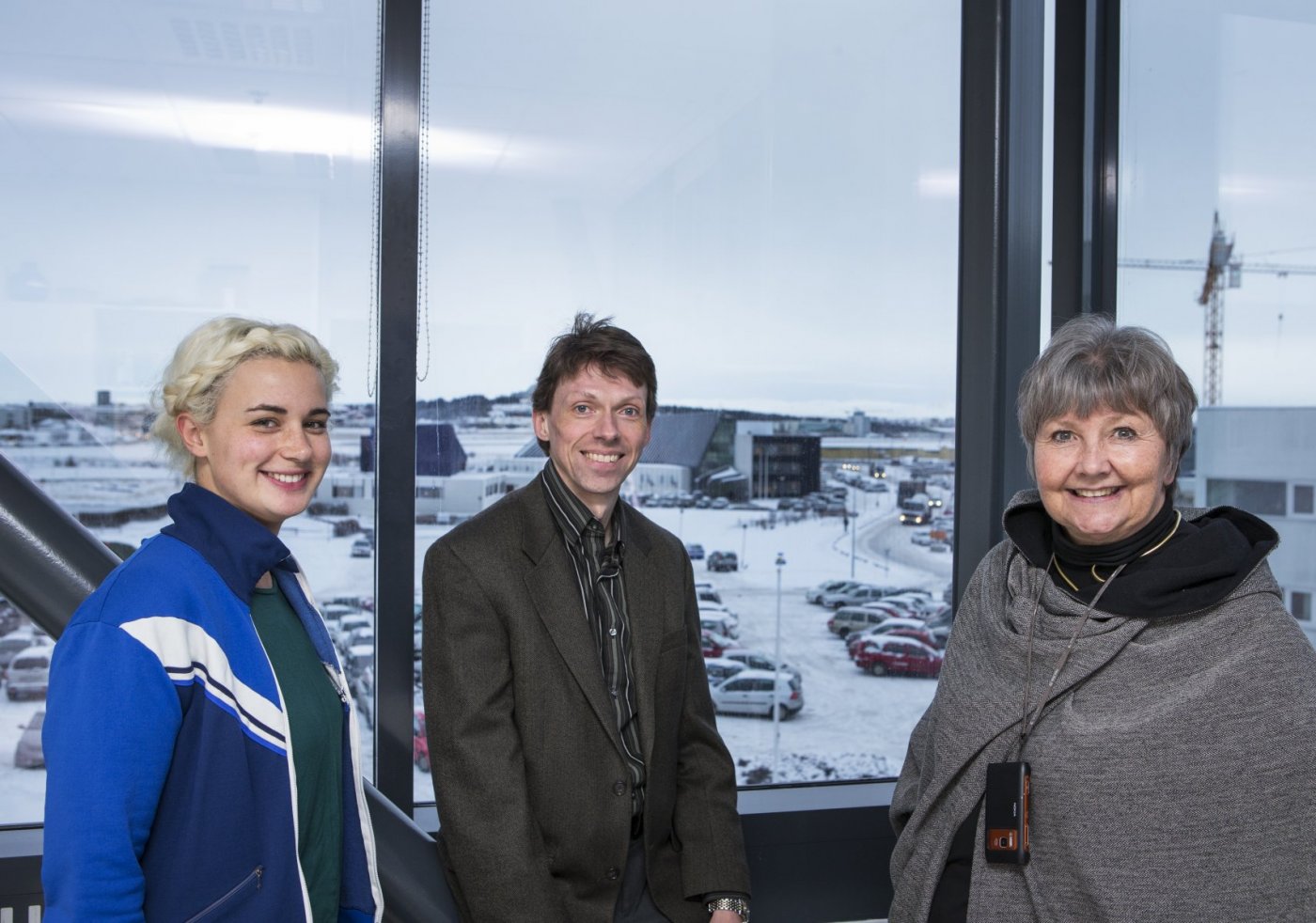Scenarios created by research teams at the University of Iceland show that the impact of a major volcanic eruption in Iceland could bring air travel in Europe, and elsewhere, to a halt for days on end. The team recently presented its results to stakeholders in flight operations.
Uta Reichardt, doctoral student in environment and natural resources, Guðrún Pétursdóttir, Director of the UI Institute for Sustainability Studies, Guðmundur Freyr Úlfarsson, Professor of transportation engineering at UI's Faculty of Civil and Environmental Engineering are on the team from the University of Iceland, along with Jeroen Aerts, Professor and Director of the Institute for Environmental Studies at Vrije University in Amsterdam. Both universities are part of the Aurora Universities Network. This is one of 10 selected participatory case studies on risk reduction that form the European research project ENHANCE.
The volcanic eruption in Eyjafjallajökull 2010 had a serious impact on air travel in Europe and elsewhere and was the inspiration for the study. Around 100 thousand flights were cancelled during the closing of airspace. It was due to the reaction of civil protection, supervisory bodies, flight operators, and other institutes that led the research team on this expedition in search of answers to how contingency plans, already improved since the Eyjafjallajökull eruption, would tackle even more serious events. The aim is to make reactions to eruptions and volcanic ash in the atmosphere even more effective in the future, thus diminishing the effect of such events on societies.
Emphasis is placed on creating and exploring scenarios of the possible effects of major volcanic eruptions emitting ash in Iceland on air travel, and using them to strengthen stakeholders' collaboration, i.e. scientists, legislators, supervisors, and flight operators. The scenarios shed new light on possible events and the stakeholders' procedures and capabilities to tackle risk, make informed decisions, and minimize risks.
Uta Reichardt has been working with two Icelandic eruption scenarios in her doctoral project. Both assume the same weather conditions as during the Eyjafjallajökull eruption in 2010, i.e. a northerly wind that would blow the ash over Europe.
The first scenario includes a 24-week eruption in Eyjafjallajökull instead of the six-week eruption in 2010. This is not inconceivable as an eruption in the volcano lasted 14 months in the 19th century. The scenario does not assume a steady eruption, rather recurrent eruptions that produce ash; possibly calling for repeated flight restrictions for several days at a time. The scenario presumes that 50% of air travel in Europe would be cancelled due to such an eruption whereas 80% was cancelled in 2010.
The second scenario, however, anticipates an extremely powerful phreatic eruption in Öræfajökull, similar to the one from 1362. The model used for this scenario was only 24 hours, whereas such an eruption could last for two to three weeks. The amount and density of the ash would be tenfold that of the Eyfjallajökull eruption in 2010. Such a 24-hour incident would have an immense impact on air traffic and bring it to a complete halt, possibly for 2-5 days after the ash reached Europe. Furthermore, the ash could travel across the Atlantic causing further interruptions to air traffic. A longer eruption would mean an even greater impact.
Collaboration between different stakeholders is important
In her doctoral project, Uta has studied the changes in the emergency plans of airlines, air traffic controllers, and manufacturers of jet engines following the eruption in Eyjafjallajökull in 2010. These stakeholders were invited to a workshop in Iceland where the scenarios were played through. The workshop was attended by representatives from EUROCONTROL (European Organisation for the Safety of Air Navigation); the International Air Transport Association (IATA); Icelandair; the Icelandic Transport Authority; the Ministry of the Interior, and the jet engine manufacturer Rolls Royce.
Uta points out that it is not enough that these partners meet and discuss potential coordinated reactions to a large volcanic ash eruption. Representatives of stakeholders involved in other forms of transport on sea and land should also be involved. It is vital that those in charge of other means of transportation are ready to take on transporting people and goods if flight traffic comes to a halt.
In addition to funding from the FP7 project ENHANCE, Uta’s research has been supported by the NordForsk funded NORDRESS Centre at the University of Iceland and the Research Fund of ISAVIA at the University of Iceland. Uta is close to concluding her research and plans to defend her doctoral dissertation in the spring of 2018.




